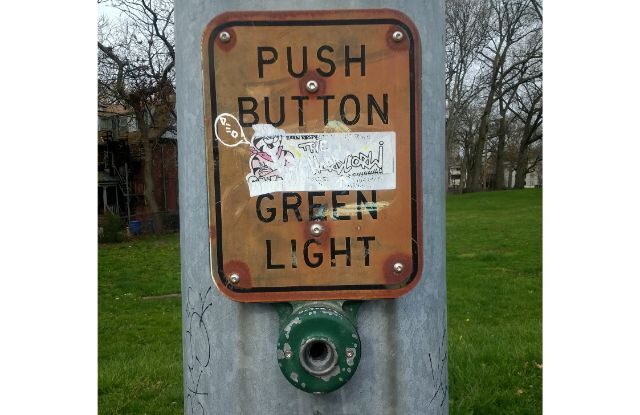It took some figuring which buttons to push, but the City of Hartford has now changed its tune regarding the automation of the pedestrian light cycle.
This means that at least for the duration of the Covid-19 pandemic, whether you are walking to work or walking your dog, you will not need to make contact with those sketchy buttons when you want to cross these intersections:
- Park and Washington
- Capitol Ave and Washington
- Main and Central Row
- Main and Charter Oak Avenue
- Park Street and Park Terrace
- Main and Albany
- Main and Jefferson
Hooray for small miracles, and props to those who actually listened to residents’ concerns.
It seems, though, not everyone understands how pedestrian signals in Hartford work on any given day. Here is the norm: the vast majority of intersections require people to physically press a button to signal that they want to cross the street. They then wait through the remainder of the vehicular traffic cycle, and are given some time — often too little — to cross the street. While more advanced cities have time for pedestrian crossing automatically built in, this is not true everywhere, and certainly not in Hartford.
Those who either don’t walk or only use very few intersections, particularly during a standard work week, may have been misled to believe that what they see in a few spots within the Central Business District is what happens everywhere. There had been less than a handful of intersections in Downtown that gave pedestrians our own light cycle, but even most of them only operated M-F, 9-5ish. Contrary to what some believe, pressing those buttons does not “speed up” the cycle — it only gives pedestrians a light cycle, which would not happen otherwise.
As we all know by now, we have been advised to wash our hands or use hand sanitizer after touching areas of high contact — which is what beg buttons are, particularly those at busy intersections. Today, there are seven fewer intersections that force us to choose between risking injury by motor vehicle or injury by virus transmission. This is a good start.
